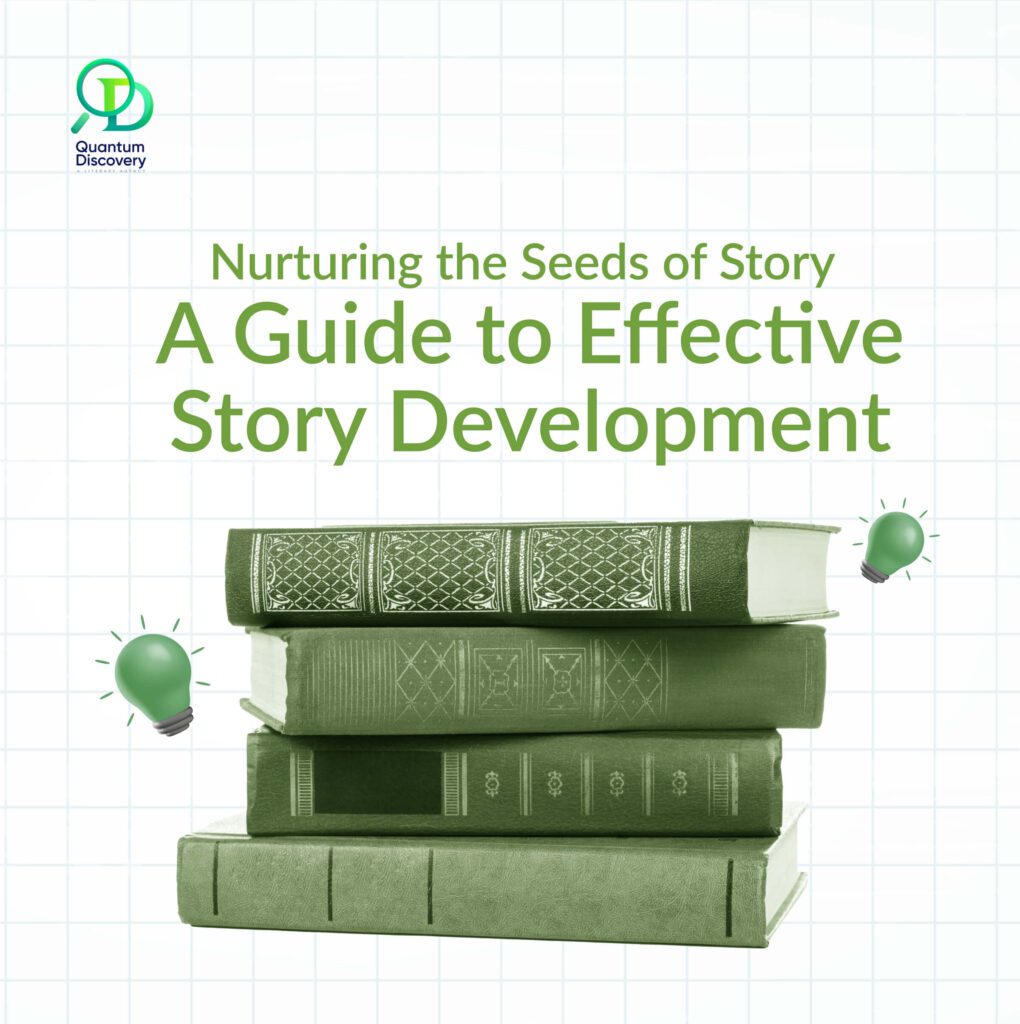Welcome, fellow storytellers and creative minds, to a journey that begins with a single spark of inspiration and evolves into a fully-fledged narrative masterpiece. Just as a tiny seed grows into a towering tree, a captivating story is nurtured through thoughtful and strategic development. In this guide, we’ll explore the essential elements and steps that transform a simple idea into a compelling, immersive, and unforgettable tale. Whether you’re a seasoned author or a novice writer, the art of story development will help you cultivate your creative vision into a flourishing narrative garden.
Planting the Seed: The Genesis of Ideas
Every story begins with a tiny seed—an idea that ignites the creative process. We’ll delve into methods for generating ideas, whether it’s through personal experiences, observation, dreams, or even the classic “what if” scenario. We’ll explore how to refine and select the most promising concepts that have the potential to blossom into engaging narratives.
Example
The blockbuster movie “Inception” sprouted from Christopher Nolan’s fascination with dreams and the concept of planting ideas in the subconscious.
Cultivating the World: Crafting the Setting
Just as a gardener prepares the soil for a bountiful harvest, a writer molds the setting to create the backdrop for their story. We’ll discuss the significance of world-building, from the physical environment to cultural nuances and historical context. By carefully tending to these details, you’ll transport your readers or viewers into a vibrant and immersive story realm.
Example
J.K. Rowling’s meticulous world-building in the “Harry Potter” series brings the magical realm of Hogwarts, Diagon Alley, and Quidditch to life, captivating readers with its enchanting intricacies.
Sowing Characters: Breathing Life into Protagonists and Antagonists
Just as diverse flowers contribute to a garden’s beauty, multidimensional characters enrich your story’s tapestry. We’ll explore techniques for creating well-rounded protagonists and compelling antagonists, delving into their motivations, flaws, and growth arcs. These characters will interact, clash, and evolve, driving the narrative forward.
Example
In “The Hunger Games” by Suzanne Collins, Katniss Everdeen’s strength and vulnerability, as well as President Snow’s calculated malevolence, contribute to a gripping clash of ideals.
Crafting the Plot: Plotting the Path of Progression
The plot is the heartbeat of your story, guiding readers or viewers through twists, turns, and climaxes. We’ll discuss the importance of structure, pacing, and conflict. From the initial inciting incident to rising action, climax, and resolution, we’ll uncover how to weave a plot that keeps your audience engaged and invested.
Example
Dan Brown’s “The Da Vinci Code” constructs an intricate web of puzzles, codes, and historical secrets, driving Robert Langdon and Sophie Neveu toward a thrilling revelation.
Nurturing Tension: Adding Conflict and Suspense
Just as a garden needs occasional storms to nourish growth, your story thrives on conflict and suspense. We’ll explore the art of creating tension, whether through external clashes, internal struggles, or unforeseen obstacles. These moments of uncertainty will keep your audience on the edge of their seats, eagerly anticipating what comes next.
Example
Agatha Christie’s “Murder on the Orient Express” plants seeds of doubt and suspicion among passengers, culminating in a riveting climax that challenges both the detective and the reader.
Cultivating Themes: Infusing Depth and Meaning
A garden flourishes with underlying themes that add depth to its beauty, and your story is no different. We’ll discuss how to cultivate thematic elements that resonate with your audience, provoking thought and reflection long after the final page or scene. Themes provide the story’s emotional and intellectual nutrients.
Example
John Steinbeck’s “The Grapes of Wrath” explores themes of resilience, social justice, and human connection as the Joad family navigates the challenges of the Great Depression.
Tending to Dialogue: Nurturing Authentic Conversations
Just as a gardener prunes and tends to their plants, you must carefully craft dialogue to ensure authenticity and relevance. We’ll explore techniques for creating natural, engaging conversations that reveal character traits, advance the plot, and convey subtext without overwhelming the narrative.
Example
J.D. Salinger’s “The Catcher in the Rye” captures the voice of Holden Caulfield through his candid, introspective, and often colloquial dialogue, inviting readers into his world.
Blooming Emotions: Evoking Reader/Viewer Responses
A well-tended garden elicits emotional responses from those who admire it, and your story should do the same. We’ll discuss methods for infusing your narrative with emotional resonance, from heartwarming moments to gut-wrenching revelations. By connecting with readers’ or viewers’ emotions, you’ll leave a lasting impact.
Example
Harper Lee’s “To Kill a Mockingbird” evokes a range of emotions through Scout Finch’s innocent perspective, capturing the themes of racism and empathy.
Harvesting Resolutions: Bringing the Story Full Circle
Every garden yields a harvest, and your story’s resolution is the culmination of its growth. We’ll explore strategies for crafting satisfying conclusions that tie up loose ends, offer closure to character arcs, and leave a sense of fulfillment. A well-harvested story lingers in the minds and hearts of your audience.
Example
Yann Martel’s “Life of Pi” concludes with a thought-provoking twist, challenging readers to reflect on the nature of truth and storytelling itself.
From a humble seed of inspiration to a lush garden of words and emotions, the journey of story development is a labor of love that yields abundant rewards. As you embark on your own narrative cultivation, remember that every stage—idea generation, world-building, character development, plot construction, and thematic exploration—plays an integral role in nurturing your story to its full potential. Just as a skilled gardener tends to each plant’s unique needs, you, too, must nurture your narrative with care, attention, and dedication. So go forth and sow the seeds of your imagination, and watch as your story blossoms into a masterpiece that captivates hearts and minds alike.
